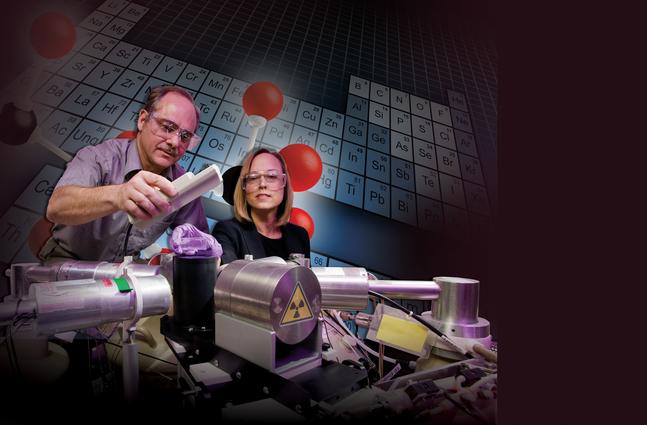LLNL research on new materials for radiation detection highlighted in Innovation
 (Download Image)
LLNL researchers Steve Payne and Nerine Cherepy. Photo by Jacqueline McBride/LLNL
(Download Image)
LLNL researchers Steve Payne and Nerine Cherepy. Photo by Jacqueline McBride/LLNL
Cherepy's team is developing a high-resolution scintillator material that operates at room temperature, is inexpensive, and can be manufactured in large volumes. Team members recently showed that europium-doped strontium iodide has higher conversion efficiency than cerium-doped lanthanum bromide. Small crystals have demonstrated 2.5 percent energy resolution, slightly better than lanthanum bromide detectors. This work was honored with a 2010 R&D 100 award.
Zaitseva's team is developing a material that can effectively separate a signature for neutrons from a strong background of gamma radiation by using pulse-shape discrimination. Team members have surveyed more than 140 organic compounds, all of which have characteristics known to be important for fast-neutron detection. Recently, they have discovered a compound with triple pulse-shape discrimination capabilities that can discriminate fast neutrons from thermal neutrons from gamma radiation. This material may also prove to be an effective antineutrino detector.
Innovation is a bimonthly magazine published by Technology Ventures Corporation in partnership with the DOE. It reports on new technologies, entrepreneurial activity, topics of interest to investors, activity at DOE and national laboratories and issues concerning technology transfer.




